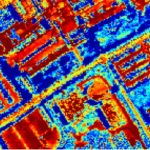Abstract: Several techniques exist for dealing with spectral variability in hyperspectral unmixing, such as multiple endmember spectral mixture analysis (MESMA) or compositional models. These algorithms are computationally very involved, and often cannot be executed on problems of reasonable size. In… Read More
Tag: hyperspectral
Instance Influence Estimation for Hyperspectral Target Signature Characterization using Extended Functions of Multiple Instances
Abstract: The Extended Functions of Multiple Instances (eFUMI) algorithm is a generalization of Multiple Instance Learning (MIL). In eFUMI, only bag level (i.e. set level) labels are needed to estimate target signatures from mixed data. The training bags in eFUMI… Read More
Functions of Multiple Instances for Learning Target Signatures
Abstract: The functions of multiple instances (FUMI) approach for learning target and nontarget signatures is introduced. FUMI is a generalization of the multiple-instance learning (MIL) approach for supervised learning. FUMI differs significantly from standard MIL and supervised learning approaches because… Read More
Estimating Target Signatures with Diverse Density
Abstract: Hyperspectral target detection algorithms rely on knowing the desired target signature in advance. However, obtaining an effective target signature can be difficult; signatures obtained from laboratory measurements or hand-spectrometers in the field may not transfer to airborne imagery effectively.… Read More
Functions of multiple instances for sub-pixel target characterization in hyperspectral imagery
Abstract: In this paper, the Multi-target Extended Function of Multiple Instances (Multi-target eFUMI) method is developed and described. The method is capable of learning multiple target spectral signatures from weakly- and inaccurately-labeled hyperspectral imagery. Multi-target eFUMI is a generalization of… Read More
Spatial and spectral unmixing using the beta compositional model

Abstract: This paper introduces the beta compositional model (BCM) for hyperspectral unmixing and four algorithms for unmixing given the BCM. Hyperspectral unmixing estimates the proportion of each endmember at every pixel of a hyperspectral image. Under the BCM, each endmember… Read More
An integrated graph cuts segmentation and piece-wise convex unmixing approach for hyperspectral imaging
Abstract: Context-based unmixing has been studied by several researchers. Recent techniques, such as piece-wise convex unmixing using fuzzy and possibilistic clustering or Bayesian methods proposed in [11] attempt to form contexts via clustering. It is assumed that the linear mixing… Read More
Earth movers distance-based simultaneous comparison of hyperspectral endmembers and proportions
Abstract: A new approach for simultaneously comparing sets of hyperspectral endmembers and proportion values using the Earth Movers Distance (EMD) is presented. First, the EMD is defined and calculated per-pixel based on the proportion values and corresponding endmembers. Next, these… Read More
Extended functions of multiple instances for target characterization
Abstract: An extension of the Function of Multiple Instances (FUMI) algorithm for target characterization is presented. FUMI is a generalization of Multiple Instance Learning (MIL). However, FUMI differs significantly from standard MIL and supervised learning approaches because only data points… Read More
Hyperspectral unmixing and band weighting for multiple endmember sets
Abstract: Imaging spectrometers measure the response from materials across the electromagnetic spectrum. Often, in remote sensing applications, the imaging spectrometers have low spectral resolution resulting in most measurements being mixed spectra from a scene. In these cases, pixels are assumed… Read More